
A lubricant is a substance that helps to reduce friction between surfaces in mutual contact, which ultimately reduces the heat generated when the surfaces move. It may also have the function of transmitting forces, transporting foreign particles, or heating or cooling the surfaces. The property of reducing friction is known as lubricity.

A wheel is a rotating component that is intended to turn on an axle bearing. The wheel is one of the key components of the wheel and axle which is one of the six simple machines. Wheels, in conjunction with axles, allow heavy objects to be moved easily facilitating movement or transportation while supporting a load, or performing labor in machines. Wheels are also used for other purposes, such as a ship's wheel, steering wheel, potter's wheel, and flywheel.

Soap is a salt of a fatty acid used for cleaning and lubricating products as well as other applications. In a domestic setting, soaps, specifically "toilet soaps", are surfactants usually used for washing, bathing, and other types of housekeeping. In industrial settings, soaps are used as thickeners, components of some lubricants, emulsifiers, and catalysts.
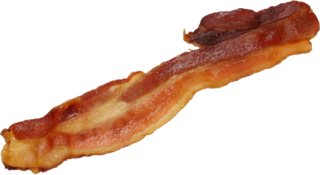
Bacon is a type of salt-cured pork made from various cuts, typically the belly or less fatty parts of the back. It is eaten as a side dish, used as a central ingredient, or as a flavouring or accent. Regular bacon consumption is associated with increased mortality and other health concerns.

Lanolin, also called wool fat, wool yolk, wool wax, sheep grease, sheep yolk, or wool grease, is a wax secreted by the sebaceous glands of wool-bearing animals. Lanolin used by humans comes from domestic sheep breeds that are raised specifically for their wool. Historically, many pharmacopoeias have referred to lanolin as wool fat ; however, as lanolin lacks glycerides, it is not a true fat. Lanolin primarily consists of sterol esters instead. Lanolin's waterproofing property aids sheep in shedding water from their coats. Certain breeds of sheep produce large amounts of lanolin.
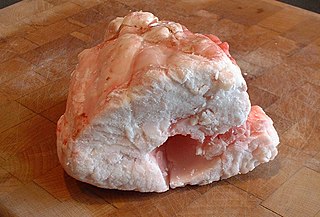
Suet is the raw, hard fat of beef, lamb or mutton found around the loins and kidneys.
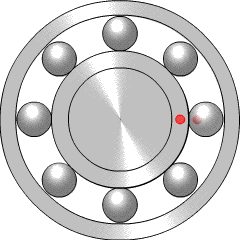
A ball bearing is a type of rolling-element bearing that uses balls to maintain the separation between the bearing races.

Pemmican is a mixture of tallow, dried meat, and sometimes dried berries. A calorie-rich food, it can be used as a key component in prepared meals or eaten raw. Historically, it was an important part of indigenous cuisine in certain parts of North America and it is still prepared today.
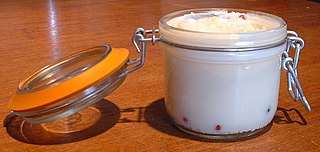
Tallow is a rendered form of beef or mutton suet, primarily made up of triglycerides.

Stearic acid is a saturated fatty acid with an 18-carbon chain. The IUPAC name is octadecanoic acid. It is a soft waxy solid with the formula CH3(CH2)16CO2H. The triglyceride derived from three molecules of stearic acid is called stearin. Stearic acid is a prevalent fatty-acid in nature, found in many animal and vegetable fats, but is usually higher in animal fat than vegetable fat. It has a melting point of 69.4 °C (156.9 °F) °C and a pKa of 4.50.
Rendering is a process that converts waste animal tissue into stable, usable materials. Rendering can refer to any processing of animal products into more useful materials, or, more narrowly, to the rendering of whole animal fatty tissue into purified fats like lard or tallow. Rendering can be carried out on an industrial, farm, or kitchen scale. It can also be applied to non-animal products that are rendered down to pulp. The rendering process simultaneously dries the material and separates the fat from the bone and protein, yielding a fat commodity and a protein meal.

Pomade is a greasy, waxy, or water-based substance that is used to style hair. It generally gives the user's hair a shiny, slick appearance. It lasts longer than most hair-care products, and often requires repeated washes for complete removal. The pomades of the 18th and 19th centuries consisted mainly of bear fat or lard. Lanolin, beeswax and petroleum jelly have been used extensively in modern pomades. The hold of pomades makes sculptured hairstyles such as the pompadour waves (hairstyle) possible.

A rushlight is a type of candle or miniature torch formed by soaking the dried pith of the rush plant in fat or grease. For several centuries, rushlights were a common source of artificial light for poor people throughout the British Isles. They were extremely inexpensive to make. English essayist William Cobbett wrote, "This rushlight cost almost nothing to produce and was believed to give a better light than some poorly dipped candles."

A trunnion is a cylindrical protrusion used as a mounting or pivoting point. First associated with cannons, they are an important military development.
Grease is a solid or semisolid lubricant formed as a dispersion of thickening agents in a liquid lubricant. Grease generally consists of a soap emulsified with mineral or vegetable oil.

Confit is any type of food that is cooked slowly over a long period as a method of preservation.
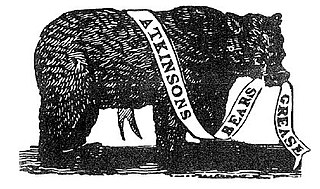
Bear's grease was a popular treatment for men with hair loss from at least as early as 1653 until about the First World War. The myth of its effectiveness is based on a belief that as bears are very hairy, their fat would assist hair growth in others. Nicholas Culpeper, the English botanist and herbalist wrote in 1653, in his The Physician's Library, "Bears Grease staies [stops] the falling off of the hair." Hildegard of Bingen (1098–1179), Benedictine mystic, composer and woman of letters, also recommended the use of the substance in her Physica. A number of cosmetics companies sold bear's grease, and it was a trademark of Atkinsons of London, who sold "Bears Grease Pomade". In the early 1880s in Arkansas, an ell of bear grease, formed from the hide from the head and neck of a deer, was a standard medium of exchange.

Cooking oil is a plant or animal liquid fat used in frying, baking, and other types of cooking. Oil allows higher cooking temperatures than water, making cooking faster and more flavorful, while likewise distributing heat, reducing burning and uneven cooking. It sometimes imparts its own flavor. Cooking oil is also used in food preparation and flavoring not involving heat, such as salad dressings and bread dips.

In fire classes, a Class B fire is a fire in flammable liquids or flammable gases, petroleum greases, tars, oils, oil-based paints, solvents, lacquers, or alcohols. For example, propane, natural gas, gasoline and kerosene fires are types of Class B fires. The use of lighter fluid on a charcoal grill, for example, creates a Class B fire. Some plastics are also Class B fire materials.


















